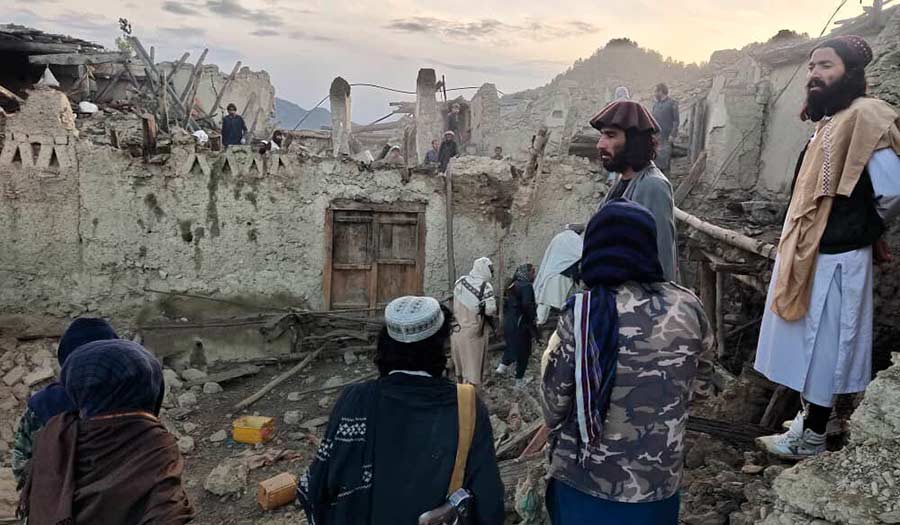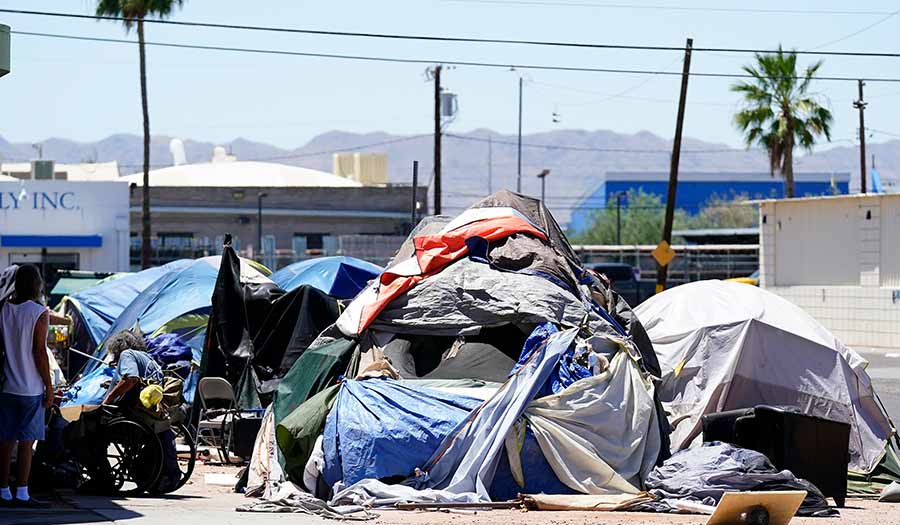 Bakhtar News Agency via AP
Bakhtar News Agency via AP
World News Desk
Learn the why behind the headlines.
Subscribe to the Real Truth for FREE news and analysis.
Subscribe NowKABUL, Afghanistan (AP) – A powerful earthquake struck a rugged, mountainous region of eastern Afghanistan early Wednesday, killing at least 1,000 people and injuring 1,500 more in the country’s deadliest quake in two decades, the state-run news agency reported. Officials warned that the already grim toll may still rise.
In the remote area near the Pakistani border, residents searched for survivors and the dead by digging with their bare hands through the rubble of collapsed stone and mudbrick houses, according to footage shown by the news agency Bakhtar. It was not immediately clear if major rescue equipment was being sent—or even if it could reach the area.
The extent of the destruction among the villages tucked among the mountains was still not known. Rutted roads—difficult to pass in the best of times—may have sustained significant damage, and a UNICEF official said landslides from recent rains have made access even more difficult. At least 2,000 homes were destroyed in the region, where on average every home has seven or eight people living in it, the UN Deputy Special Representative to Afghanistan Ramiz Alakbarov told reporters.
The disaster posed a major test for Afghanistan’s Taliban government, which seized power nearly 10 months ago as the U.S. and its NATO allies were carrying out their withdrawal from the country and has been largely shunned by the world community since.
Rescuers rushed to the area by helicopter, but the response is likely to be complicated since many international aid agencies left Afghanistan after the Taliban takeover in August. Moreover, most governments are wary of dealing directly with the group, a reluctance that could slow the deployment of emergency aid and teams.
In a rare move, the Taliban’s reclusive supreme leader, Haibatullah Akhundzadah, who almost never appears in public, called for “the international community and all humanitarian organizations to help the Afghan people affected by this great tragedy and to spare no effort to help the affected people.”
“We ask God to save our poor people from trials and harm,” he said in a statement put out by the Taliban spokesman.
But in a sign of the muddled workings between the Taliban and the international community, Mr. Alakbarov said the Taliban have not formally requested that the UN mobilize international search and rescue teams. Afghan authorities have deployed a few dozen ambulances and several helicopters but have not asked the UN to obtain any more equipment or machinery from neighboring countries, he added, without elaborating.
The disaster only compounds the woes in Afghanistan, which is already deep in one of the world’s worst humanitarian crises, with millions facing increasing hunger and poverty after the cutoff of international financing to the Taliban. That has prompted a massive aid program, but to avoid putting money in the Taliban’s hands, the world has funneled funding through the UN and other humanitarian agencies—system that may be too slow for an emergency response to the quake.
The 6.1 magnitude quake had its epicenter in Paktika province, some 31 miles southwest of the city of Khost, according to neighboring Pakistan’s Meteorological Department. Experts put the depth at just 6 miles—another factor that could lead to severe destruction.
The European seismological agency said the earthquake’s tremors were felt over 310 miles by 119 million people across Afghanistan, Pakistan and India.
Footage from Paktika showed men carrying people in blankets to a waiting helicopter. Others were treated on the ground. One resident could be seen receiving IV fluids while sitting in a plastic chair outside the rubble of his home and still more were sprawled on gurneys. Some images showed residents picking through clay bricks and other rubble from destroyed stone houses. The roofs or walls of others had caved in.
The death toll given by the Bakhtar News Agency was equal to that of a quake in 2002 in northern Afghanistan. Those are the deadliest since 1998, when an earthquake also 6.1 in magnitude and subsequent tremors in the remote northeast killed at least 4,500 people.
In most places in the world, an earthquake of that strength would not inflict such extensive devastation, said Robert Sanders, a seismologist with the U.S. Geological Survey. But a quake’s death toll more often comes down to geography, building quality and population density.
“Because of the mountainous area, there are rockslides and landslides that we won’t know about until later reporting. Older buildings are likely to crumble and fail,” he said. “Due to how condensed the area is in that part of the world, we’ve seen in the past similar earthquakes deal significant damage.”
- World News Desk
- WEATHER & ENVIRONMENT
 Sweltering Streets: Hundreds of Homeless Die in Extreme Heat
Sweltering Streets: Hundreds of Homeless Die in Extreme Heat
Other Related Items:
More on Related Topics:
- Myanmar’s Civil War Has Seen a Devastating Increase in Attacks on Schools, Researchers Say
- India Begins to Flex Naval Power as Competition with China Grows
- China’s Population Falls for a 2nd Straight Year as Births Drop Even After End of One-Child Policy
- Asia Lags Behind Pre-Pandemic Levels of Food Security, UN Food Agency Says


